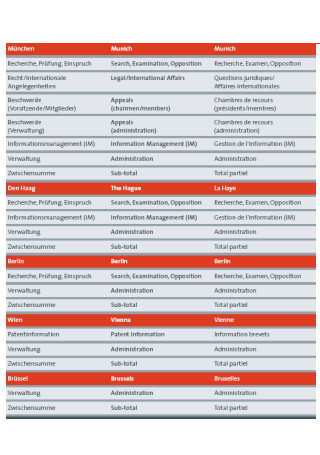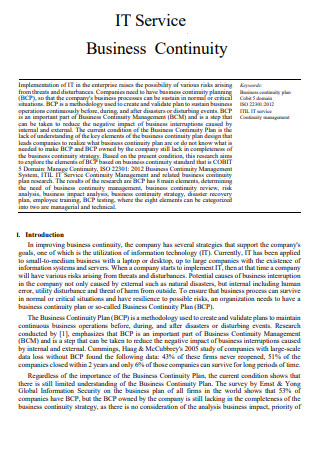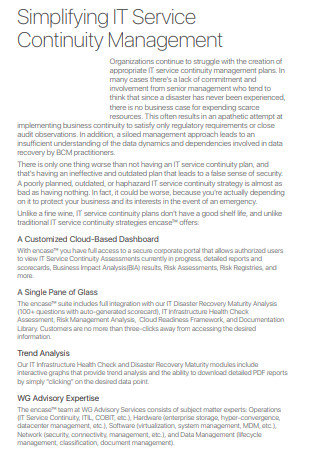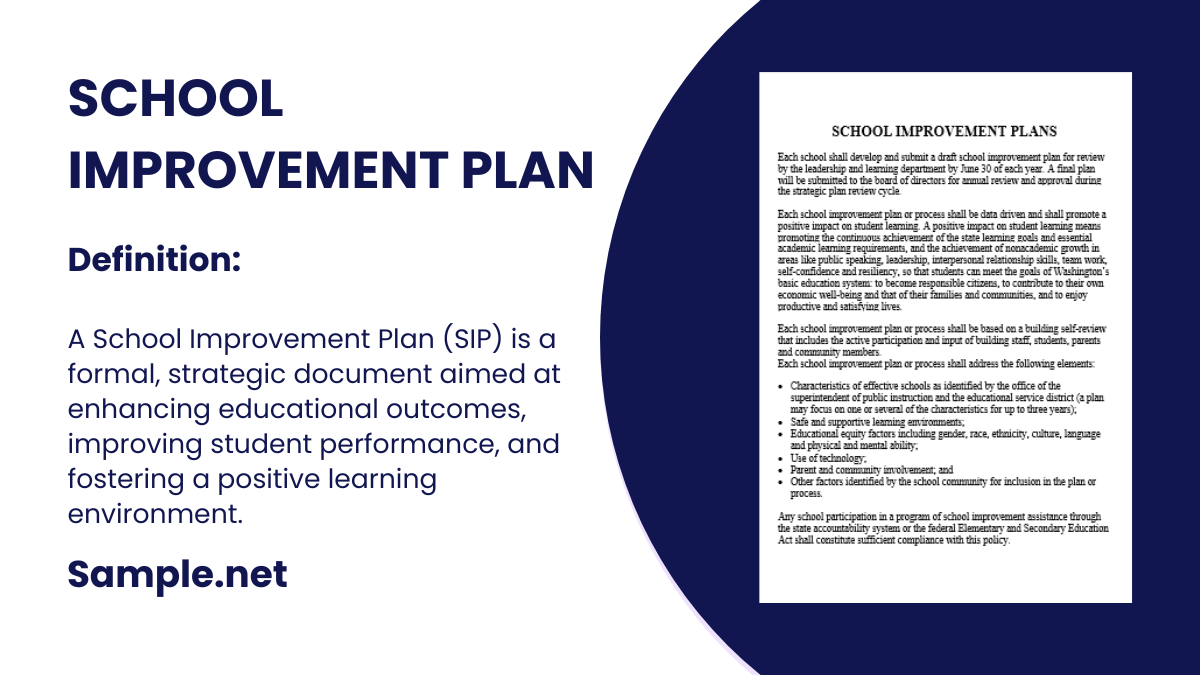A School Improvement Plan is a strategic blueprint aimed at enhancing educational outcomes for students. It outlines clear goals, targeted actions, and measurable benchmarks to ensure continuous development in…
continue reading
7+ SAMPLE IT Service Continuity Plan
-

IT Service Continuity Assessment Plan
download now -

IT Service Continuity Management Plan
download now -

IT Service Continuity Plan
download now -

IT and Communication Service Continuity Plan
download now -

Sample IT Service Continuity Plan
download now -

IT Business Service Continuity Plan
download now -

Simple IT Service Continuity Plan
download now -

IT Service Continuity Plan Example
download now
What Is an IT Service Continuity Plan?
First of all, what is business continuity management? Well, it simply refers to the advanced process of planning and preparation of an organization so that they can immediately resume their whole operations or just enable continuity of their basic business functions in the wake of a disaster. Business continuity management also entails risk assessment procedures that can hamper the business operations, such as cybersecurity attacks, natural disasters such as floods and earthquakes, and criminal acts.
An IT Service continuity plan is a business document that contains a collection of policies, standards, procedures, and tools that help organizations in their ability to not only respond to major system failures but also strengthen their fortitude to major incidents, helping to ensure that vital systems and services do not fail or are restored inside allowable process recovery time objective limits.
What’s Inside an IT Service Continuity Plan?
Here are the important factors that should be present when creating an IT service continuity plan, or any kind of business continuity plan:
What Are the Types of IT Security Threats?
Listed below are some of the most common types of security threats that can be jeopardizing the operations of an IT system:
Steps in Creating a Continuity Plan
As stated earlier, an IT service continuity plan helps the employees in the IT industry be prepared with a plan in place to negate any loss or damages that may be incurred during a disruption or a disaster. With that being said, here are the steps to create an effective continuity plan.
-
1. Performing a Review of Regulations
This step is what happens first when creating a continuity plan. Here, you need to find out if your IT service company must comply with any standards imposed by federal or international agencies, state authorities, or any type of legislation that is specific to your industry. Additionally, you need to perform a check to determine whether your company has to follow any external criteria from investors, partners, or auditors to verify that your business continuity plan is totally valid across the board.
-
2. Performing a Risk Assessment
After performing a thorough review of the regulations in your area regarding continuity plans, proceed to this step. In this step, you have to conduct a risk assessment on your IT service business in this stage to identify and prioritize possible business risks and interruptions based on severity and chance of occurrence. The purpose of the risk assessment is to categorize risks that are tolerable and risks that you would like to take action against, whether by minimizing them, developing contingency plans, or leaving them alone. You must evaluate corporate culture, cost, and any other possible issues that may arise if you choose to follow a plan.
-
3. Performing a Business Impact Analysis
After performing a risk assessment, this step will follow. In this step, you should go over each of your IT service company’s divisions individually to understand the functions and tools that are important to them. This data gathered during the analysis is extremely useful in defining recovery points and recovery time targets for important functions. In this step, you should also establish internal and external requirements, as well as identify important employees and backup employees that possess comparable skill sets with the main employees. This stage is critical because it allows you to establish the highest amount of downtime your organization can tolerate.
-
4. Developing the Continuity Plan
Once the risk assessment and the impact analysis have been completed, time to proceed to this step. In this part of the process, you need to consider your overall strategy and the creation of your continuity plan for your service. The formulation of plans for each department, division, and site-level contingency requires a summary of your risk assessment and business impact analysis results. Each strategy should be designed to account for the greatest amount of downtime that each function can sustain. And once you’ve developed your strategy, it’s critical to discuss it with key organizational stakeholders in order to secure executive approval, if necessary.
-
5. Testing of the Continuity Plan
After developing the continuity plan for your IT service business, it’s time to test it. The ideal strategy in this stage is to provide frequent employee training classes with tabletop and simulation activities to guarantee the business is adequately trained in the event of a disruption. It is also a good idea to have your plan, business impact analysis, and risk assessments reviewed by an external, qualified business continuity specialist on a yearly basis to ensure that new threats and business operational processes are appropriately represented in your plans. The continuity plan should be a living document that is updated on a regular basis to reflect the current state of affairs.
FAQs
Should an IT service plan be communicated to the members or not?
Yes, it should be communicated since communication is essential to guarantee that all stakeholders are kept up to date at all times. In fact, some companies include this as their final step in creating the continuity plan. In this process, they disseminate it to all relevant individuals, both internally and outside, as well as to provide continuing revisions to the continuity plan when they become ready. They also notify any vendors or third-party stakeholders who have a role in the continuity plan or the parties that will be affected by it.
What role does the service continuity manager play?
The role of the service continuity manager is to be in charge of ensuring service continuity. This individual is generally in charge of the entire process, from start to finish, leading plan formulation, coordinating continuous monitoring and evaluation operations, and supervising plans in action in the event of a disaster. Additionally, this individual is often an accomplished, senior-level technical support worker, but maybe in a managerial position and not directly dealing with the technology on a daily basis.
What are the advantages of having an IT service continuity plan?
Having an IT service continuity plan in place can be useful since organizations with comprehensive disaster recovery plans recover faster and more completely in the event of a disaster. Another benefit of this document is that the company is constantly prepared for a catastrophic crisis and has the ability to respond promptly and appropriately.
When you manage to create a solid and effective continuity plan for your IT service business, it enables your company to have greater reaction times and greater confidence when they react to disruptions that can suddenly happen. Having this document can also significantly reduce downtime during disruptions. In this article, there are various examples that can help you when you want to create a continuity plan by yourself.


